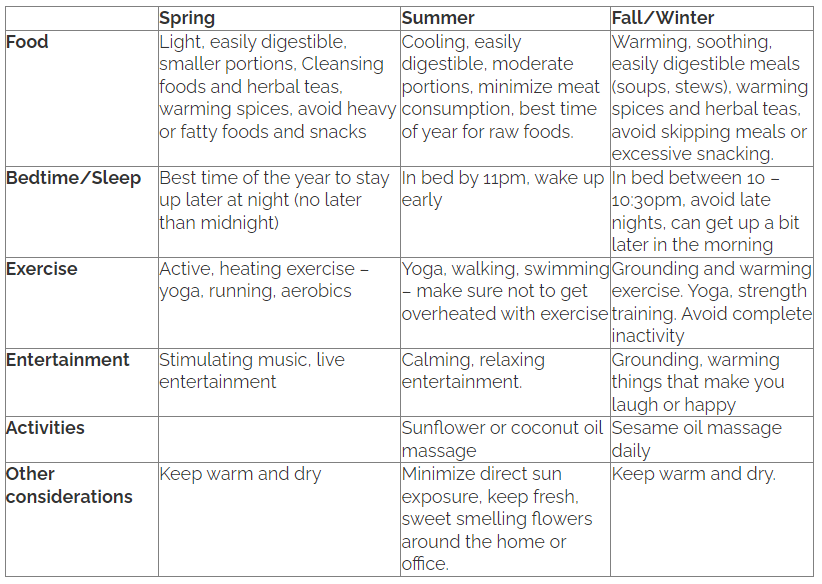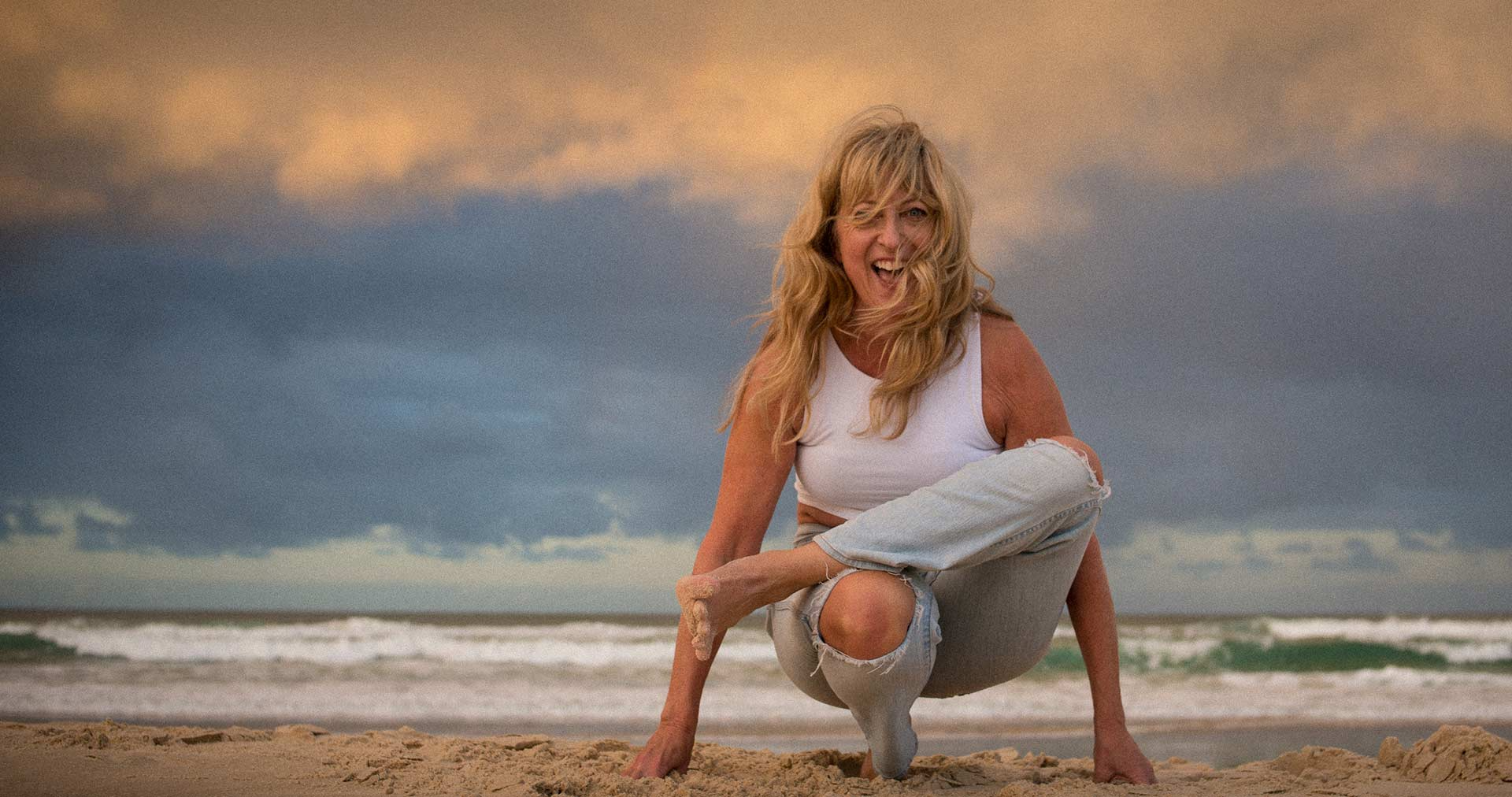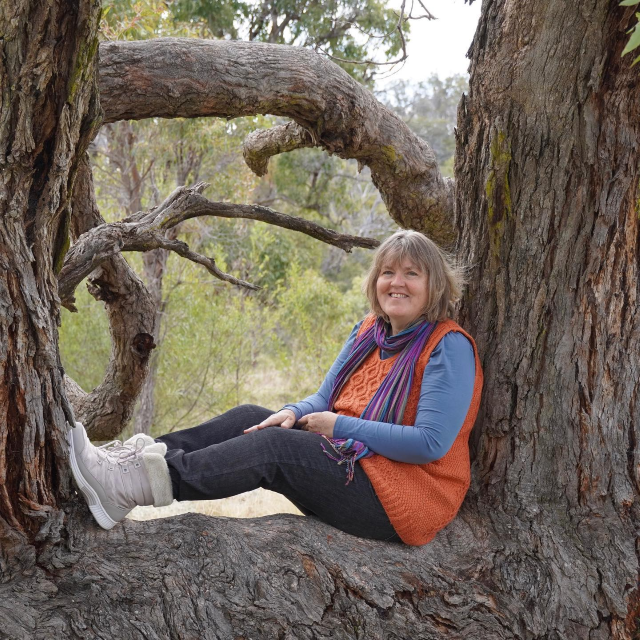A 3-step plan for seamless season shifting
The seasons definitely know how to consume our thoughts and behaviours. I mean who doesn’t look forward to the summer, get nostalgic about the spring and fall or associate the winter with some favorite holiday, activity, or sporting event?
But how much time do we actually spend thinking about the transition between the seasons? It doesn’t often happen that we close the door on one season only to open the door to the next a minute, day, or hour later. So what of that period of days or weeks at the close of one season and the start of the next? What happens in that seasonal purgatory that’s worthy of notice…?
Ayurveda’s answer is… everything!
Ritusandhi is the sanskrit name for the junction between the seasons. It’s the fourteen-day period that comprises the last seven days of one season and the first seven days of the next season. It’s the timeframe for making a conscious shift from one season to the next. It’s also the time of year when we’re most vulnerable and susceptible to disease (think about when you most often get sick…always seems like it’s that transition from one season to the next…doesn’t it?). And it bears paying attention to. Oh and we’re right in the middle of it… RIGHT NOW!
Consciously observing the change of seasons is one of the keys to maintaining great health throughout the year. So this ritusandhi (and all the others that come after it) consider this simple three-step plan for making a smooth transition:
1. Transition what you take into your body
Start making the gradual shift to foods that are seasonal for your part of the world (not always easy to know what’s seasonal in this day and age when food is shipped all over the world)
Ensure you’re getting enough water. Water consumption should stay relatively steady throughout the year (you might need a little less during the spring). This transition period is a perfect time to check in with yourself to make sure you’re getting enough.
Be mindful of the information and entertainment you’re consuming. Realize that it makes a difference. Spring is a time for stimulation, and summer is a time for cooling and calming, fall and winter are times for grounding and warming. How can the programs, news, and music you consume match the mood needed for the season?
2. Transition what you put on your body
This is most likely the one that we have the most experience with, but it bears repeating that we should dress appropriately for the season. Often we get so used to inappropriate dressing (i.e. wearing clothes that aren’t warm, cool, or suitable enough for the weather) that we don’t realize the impacts on our state of mind and health. I refused to wear socks for years after moving away from California just because I never had to wear them growing up (never mind the near-freezing winter temperatures in Melbourne Australia which eventually took their toll on my poor feet before I gave in and bought some socks). Making the conscious choice to change what you wear as the seasons change is an important part of self-care and ultimately the key to happiness and well-being
3. Transition what you do with your body
It’s time to start thinking about when you wake up, go to bed, and make some slight changes in consideration of the change in daylight hours. Ayurveda suggests waking up about an hour before sunrise year round! The actual time shift slightly so make sure to adjust the time you go to bed as well to ensure that you’re getting sufficient sleep.
Make an effort to take advantage of activities (indoor and outdoor) that are appropriate for the season and be sure to take some time in nature every season just to connect with the natural world (don’t forget to wear the right clothes!!).
Also, consider how you might change your exercise routine to make it more suitable for the season you’re moving into.
So you’ve got a couple of weeks. I know these days that feels like a couple of minutes but take your time. Notice what you’re doing, make the shift subtle, and don’t feel like you have to do everything at once, but definitely feel it. And even consider marking the change in some significant way just to remind yourself of the choices you’re making to take care of yourself!
Not sure what to do with all of this?
Not to worry! I’ve put together a little chart below to help you out!
The chart outlines the Ayurvedic view on foods, sleep, exercise, etc. suitable for each of the seasons. So from wherever you are you’ll want to transition to what’s relevant for the season you’re moving into (over here in Australia we’re heading from summer into fall).
And as always I’d love to hear from you!
Do you already have a routine for shifting seasons? What do you do? When do you do it? Why do you do it? Season shifting is for many of us an unconscious activity that we’ve grown up with. In the comments below, please share with us some of the traditions you’ve adopted or created to observe these key times of the year!












Round about now, if you’re like anyone (or everyone) you’re thinking about the promises you’ll make to yourself and the many ways you’ll change your habits and behaviours in 2023.